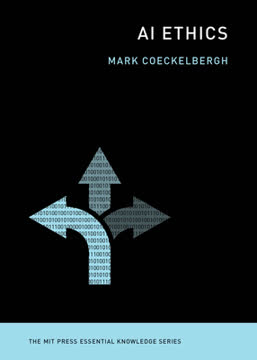Key Takeaways
1. Enterprise architecture aligns business processes with IT systems
Enterprise architecture is typically used to describe an agency-wide or organization-wide framework for portraying and incorporating the business processes, information flows, systems, applications, data, and infrastructure to effectively and efficiently support the organization's needs.
Holistic approach. Enterprise architecture provides a comprehensive view of how an organization's IT systems support its business goals and processes. It encompasses not just software development, but also infrastructure, data management, and business workflows. By creating a unified framework, enterprise architecture enables organizations to make strategic technology decisions that align with their overall objectives.
Key benefits:
- Improved business-IT alignment
- Enhanced operational efficiency
- Better resource allocation
- Increased agility and adaptability
- Reduced complexity and redundancy
2. Modularity and loose coupling are foundational to enterprise development
Loosely coupled classes should be broken down and divided into separate "vehicles of purpose." In the enterprise world, these are known as units of codes.
Flexibility and maintainability. Modularity and loose coupling are essential principles in enterprise development. By breaking down complex systems into smaller, independent units of code, developers can create more flexible and maintainable applications. This approach allows for easier testing, updates, and scaling of individual components without affecting the entire system.
Key advantages:
- Improved code reusability
- Easier troubleshooting and debugging
- Simplified collaboration among development teams
- Enhanced system scalability
- Reduced risk of system-wide failures
3. Test-Driven Development ensures reliability and drives design
Test Driven Development forces you to work in very short cycles and only on the requirements specifically needed for your program. You write short tests and the minimum amount of code in order for them to pass, refactor, and repeat.
Quality-first approach. Test-Driven Development (TDD) is a methodology that emphasizes writing tests before implementing functionality. This approach not only ensures code reliability but also drives better software design. By focusing on small, testable units of code, developers naturally create more modular and loosely coupled systems.
TDD cycle:
- Write a failing test
- Implement the minimum code to pass the test
- Refactor the code
- Repeat
Benefits of TDD:
- Improved code quality and reliability
- Faster bug detection and resolution
- Better code documentation through tests
- Encourages simpler, more focused designs
4. Dependency Injection enables flexible and maintainable code
Dependency Injection (DI) pattern refers to the act of supplying an external dependency to high-level module. It is a type of Inversion of Control whereby the process of obtaining a lower-level module is the concern being inverted.
Decoupling dependencies. Dependency Injection is a design pattern that promotes loose coupling by externalizing the creation and management of object dependencies. Instead of hard-coding dependencies within a class, they are "injected" from the outside, typically through constructors, methods, or properties. This approach makes code more flexible, testable, and maintainable.
Types of Dependency Injection:
- Constructor injection
- Setter injection
- Method injection
Benefits:
- Improved testability through easier mocking of dependencies
- Enhanced code reusability and modularity
- Simplified configuration management
- Reduced boilerplate code
5. Inversion of Control containers simplify object creation and management
IoC containers help to maintain code modularity while automating a lot of the logic developers would otherwise need to write themselves.
Automating dependencies. Inversion of Control (IoC) containers are frameworks that manage the creation and lifetime of objects in an application. They automate the process of dependency injection, reducing the amount of boilerplate code developers need to write. IoC containers handle the complexities of object creation, allowing developers to focus on business logic rather than infrastructure concerns.
Key features of IoC containers:
- Automatic dependency resolution
- Lifecycle management of objects
- Configuration-based object creation
- Support for various injection types (constructor, property, method)
Popular IoC containers for .NET:
- Microsoft Unity
- Autofac
- Ninject
- Castle Windsor
6. Middleware facilitates communication between distributed systems
Middleware is computer software that connects software components or applications.
Bridging applications. Middleware acts as a layer between different software systems, enabling them to communicate and share data effectively. In enterprise environments, middleware plays a crucial role in integrating diverse applications, platforms, and databases. It handles complex tasks such as data translation, security, and transaction management, allowing developers to focus on application-specific logic.
Types of middleware:
- Message-oriented middleware (MOM)
- Remote Procedure Call (RPC) middleware
- Object Request Broker (ORB) middleware
- Database middleware
Benefits of middleware:
- Improved interoperability between diverse systems
- Enhanced scalability and performance
- Simplified integration of legacy systems
- Centralized security and monitoring
7. Object-Relational Mapping bridges the gap between objects and databases
The role of an ORM is to bridge the gap between the relational model (the database) and the object-oriented model.
Simplifying data access. Object-Relational Mapping (ORM) tools provide a layer of abstraction between object-oriented code and relational databases. They automate the process of converting data between incompatible type systems, reducing the amount of data access code developers need to write. ORMs allow developers to work with database entities as if they were regular objects, improving productivity and code maintainability.
Key features of ORMs:
- Automatic SQL generation
- Caching and performance optimization
- Support for multiple database systems
- Query languages that integrate with programming languages
Popular ORM frameworks:
- Entity Framework (for .NET)
- NHibernate (for .NET)
- Hibernate (for Java)
- SQLAlchemy (for Python)
Benefits of using ORMs:
- Reduced development time and code complexity
- Improved code maintainability and readability
- Database independence
- Built-in security features (e.g., protection against SQL injection)
Last updated:
FAQ
What's Sociology: A Very Short Introduction about?
- Overview of Sociology: The book provides a concise introduction to sociology, exploring its key concepts, theories, and methodologies. It explains how sociologists study society and social behavior.
- Importance of Social Context: Emphasizes the significance of social context in understanding human actions and societal outcomes.
- Accessible Format: Written by Steve Bruce, it is designed to be accessible to readers with no prior knowledge of sociology, making complex ideas understandable.
Why should I read Sociology: A Very Short Introduction?
- Foundational Knowledge: Serves as a foundational text for anyone interested in sociology or social sciences, providing essential insights into societal dynamics.
- Critical Thinking Skills: Encourages critical thinking about social structures and issues, challenging readers to question assumptions and consider different perspectives.
- Concise and Engaging: The book is concise and engaging, making it easy to read and digest while providing a comprehensive overview of the subject.
What are the key takeaways of Sociology: A Very Short Introduction?
- Understanding Society: Emphasizes the importance of understanding the social context in which individuals live and how social structures influence behavior.
- Role of Sociological Research: Discusses the significance of sociological research methods in gathering data and understanding social patterns.
- Interconnectedness of Social Issues: Illustrates how different social issues, such as race, class, and gender, are interconnected, encouraging a broader view of social phenomena.
What is the sociological imagination as defined in Sociology: A Very Short Introduction?
- Definition of Sociological Imagination: The ability to see the relationship between individual experiences and larger social forces, connecting personal troubles with public issues.
- Historical Context: Popularized by C. Wright Mills, it emphasizes understanding the interplay between biography and history for sociological analysis.
- Practical Application: Fosters critical thinking and awareness of social dynamics, helping individuals comprehend their own lives and societal structures.
How does Sociology: A Very Short Introduction address social inequality?
- Exploration of Inequality: Examines various forms of social inequality, including class, race, and gender, and their impact on individuals' life chances.
- Structural Factors: Emphasizes the role of structural factors, such as economic systems and social institutions, in perpetuating inequality.
- Call to Action: Encourages readers to recognize and challenge social inequalities, advocating for sociological awareness to promote social change.
What methodologies are discussed in Sociology: A Very Short Introduction?
- Qualitative and Quantitative Methods: Outlines both qualitative and quantitative research methods used in sociology, explaining their contributions to understanding social phenomena.
- Surveys and Interviews: Discusses surveys and interviews as common data collection techniques for gathering insights from individuals.
- Ethnography: Highlights ethnography as a valuable qualitative method for studying social groups in their natural settings, providing in-depth understanding.
How does Sociology: A Very Short Introduction define culture?
- Definition of Culture: Culture is defined as the shared beliefs, values, norms, and practices of a group, encompassing language, art, customs, and social behaviors.
- Cultural Relativism: Discusses cultural relativism, which posits that cultures should be understood on their own terms, promoting respect for diversity.
- Impact on Society: Emphasizes culture's role in shaping social identity and influencing behavior, affecting how individuals interact with one another.
What is the significance of social institutions as explained in Sociology: A Very Short Introduction?
- Definition of Social Institutions: Established systems and structures that organize society, such as family, education, religion, and government.
- Functions of Institutions: Serve various functions, including socialization, regulation of behavior, and provision of support, helping individuals navigate their roles.
- Interconnectedness of Institutions: Highlights how different social institutions are interconnected, with changes in one affecting others and impacting society.
How does Sociology: A Very Short Introduction approach the topic of globalization?
- Definition of Globalization: Describes globalization as the process of increasing interconnectedness among countries and cultures, affecting social, economic, and political dynamics.
- Cultural Exchange: Explores the impact of globalization on cultural exchange, highlighting both positive and negative consequences.
- Social Implications: Emphasizes the social implications of globalization, including changes in labor markets, migration patterns, and social inequalities.
What are the best quotes from Sociology: A Very Short Introduction and what do they mean?
- "Sociology is the study of social life.": Emphasizes sociology's focus on understanding how individuals interact within society and the importance of social relationships.
- "The sociological imagination enables us to grasp history and biography and the relations between the two within society.": Highlights the concept of the sociological imagination, connecting personal experiences with larger social forces.
- "Sociology helps us to understand the world we live in.": Reflects the practical application of sociology in everyday life, suggesting that sociological insights inform our understanding of current events and social issues.
How does Sociology: A Very Short Introduction address social change?
- Mechanisms of Change: Discusses mechanisms of social change, including technological advancements, social movements, and shifts in cultural norms.
- Impact of Globalization: Highlights globalization's role in accelerating social change, affecting local cultures and economies.
- Resistance to Change: Explores resistance to social change, examining why certain groups may oppose changes in societal norms or structures.
What role do institutions play in Sociology: A Very Short Introduction?
- Definition of Institutions: Defined as established patterns of behavior and social structures that organize social life, including family, education, religion, and government.
- Function of Institutions: Serve to maintain social order, provide stability, and facilitate socialization, shaping individual behavior and societal norms.
- Change and Adaptation: Discusses how institutions evolve over time in response to social change, reflecting shifts in cultural values and societal needs.
Review Summary
Sociology: A Very Short Introduction receives mixed reviews. Some praise it as an engaging introduction to sociology, highlighting its accessible writing and interesting examples. Others criticize it for lacking structure, being too opinionated, and not providing a comprehensive overview of the field. Many readers appreciate the book's insights into sociological concepts but find certain sections confusing or controversial. The final chapter is often noted as particularly thought-provoking. Overall, readers recommend it as a starting point for those interested in sociology, though some suggest supplementing it with other resources.
Very Short Introductions Series Series












Similar Books










Download PDF
Download EPUB
.epub digital book format is ideal for reading ebooks on phones, tablets, and e-readers.



